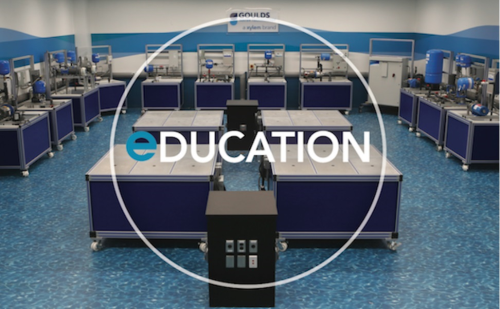
These courses will range from water system troubleshooting basics to an introduction of the recently launched fifth generation HYDROVAR intelligent pump controller. Online WebEx training seminars can be accessed from anywhere and are intended to provide dealers, distributors, engineers and OEMs with current product information, troubleshooting support and other training to help grow their business.
Interactive
The courses run from June to August. Industry professionals are also encouraged to enroll in GWT’s e-Learning virtual education program, which features three courses: basic water systems training, variable frequency drives and wastewater pumps. The e-Learning courses are modified for individual comprehension and contain videos and interactive online resources. GWT Factory School in-person training courses will resume in September and take place at the Campbell Education Center laboratory in Seneca Falls, New York. A complete schedule of courses is available at http://goulds.com/factory-school/.




